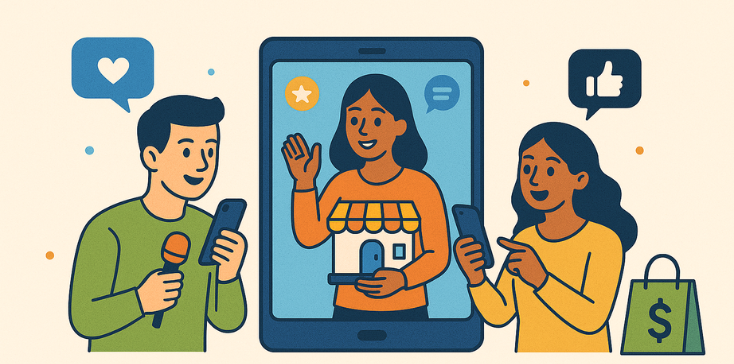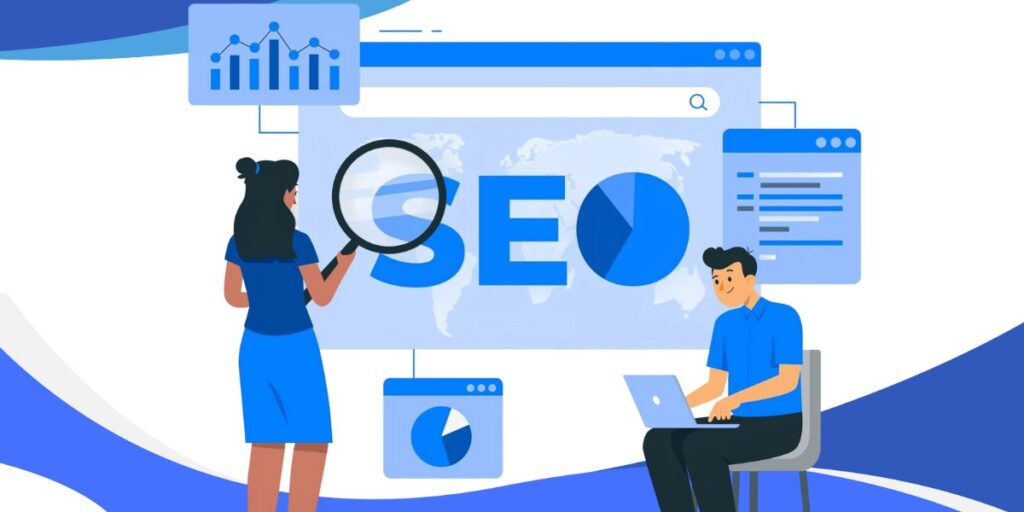Start an Ecommerce Business From Scratch might sound like a daunting task, but in today’s digital age, launching your own online store is more doable than ever. Whether you’re dreaming of selling hand-crafted candles, tech accessories, or curated fashion pieces, you’ve come to the right place. This guide will take you from “just an idea” to “official launch” and beyond without the overwhelm.
From choosing a product to mastering marketing and working with the right partners (hello, ecommerce marketing agency), this blog post covers all the essentials. So buckle up, future entrepreneur. It’s time to click that “Launch” button.
Look Before You Leap – Research Your E-Commerce Business
Globally, there are over 400 million small and medium-sized businesses (SMBs), with millions launching annually across various industries. To succeed in this competitive environment, you need to study businesses related to your niche and understand how your market functions. According to the World Bank, SMEs represent about 90% of businesses and more than 50% of employment worldwide.
Try to go step by step for the key factors:
- Market Demand: If you are launching your Product, you need to have a better understanding of the Market. Whether there is a need for your Product or not.
- Target Audience: Look for your Audience Age, Behaviour, and Choices. Let’s take a simple Example of Pampers pants. Their diapers are specifically designed for small kids.
- Competition: Study your Competitors’ e-commerce marketing Strategies, Similarities Between your Products, and how your Brand can be different from them
- Cost and Funding: Cost and Funding are Crucial. You need to calculate how much money you will invest in things from website to e-commerce platforms, from logistics to Location. Everything needs Money. When you are trying to run a business, you need to understand Proper Investment in the right Places.
- Location and Logistics: Imagine that you want to start a Business related to farming, and there’s no water source near your location, will you be able to run your Business even for a week? No, you can’t therefore decide location according to your business criteria and how you will manage the product to reach your Audience without any Damage to the product.
Almost 45% of businesses fail due to a lack of Market research. First step before Starting Any business: research about Your Business. Lack of business research is the most significant factor for Market Failure.
Map It Out – Create a Winning Business Plan Start an E-commerce Business
A great idea is just the beginning to start an ecommerce business. Everything that you need is related to your Plan. You need to decide on your Business name. What are you offering? What are you planning? What are your goals?
Business Description:
- Overview: What is your Business, and why does it exist?
- What industry do you want to choose, and what is your product?
- Why is your brand unique, and why should people choose your Brand?
Market Analysis:
- Look for audiences that are suitable for you
- Products are always created according to your customers. Tell your customer what problem you are solving for them.
- What are the strengths and weaknesses of your Competitor?
SWOT:
- Strength: internal advantage of the company.
- Weakness: Areas to Improve.
- Opportunities: adapting trends of the Markets.
- Threats: Challenges that you are going to face.
Marketing and Sales Strategy:
- Using keywords, Influencer Marketing, and PPC for Ecommerce
- Attract, convert, and retain customers
- Position your brand, what you want your Audience to think About Your Brand
- Reviews, loyalty program, and Retargeting
Products and Services:
- What type of Product are you selling
- How is it beneficial to your customer
- Cost-effective or not
- New launches of products
Team and Management:
- Name, key roles, Responsibilities
- Even if it’s about the present, you need to decide the future roles
- Plan when you want to hire
Operational Management:
- How will you run your business each Day
- Decide on your partners and vendors
- Shipping Methods and Returns
Planning to start an ecommerce Business may not give you Guarantee of success in your business. But it will help you to be Ready for enhanced resource allocation, improved decision making.
Pick Your Digital Storefront – Best E-commerce Platforms for Products
Whether you are a small business owner or a huge Business Owner, you need an e-commerce platform. Your e-commerce platform defines your audience Experience, Sales Process, and scalability.
Shopify:
Best For: Turnkey Solution for all sizes of Businesses
Price: Starts at $39/month
Key Features:
- Integrate with thousands of apps and templates
- Always there for your work 24/7
- You can optimize it with your phone
- Manage your Hosting, Inventory, Payment Processing, and deliveries (all in one)
Pros:
- Set up your business in a few minutes
- Scale High With Your Business
- Thousands of templates and plugins.
Cons:
- You have to use Liquid to Shopify coding language; otherwise, only Limited customization
- Can add a top to your Monthly fees
WooCommerce:
Best for: Customizable online Store setup and WordPress already installed in them.
Pricing: Free core plugin (additional costs for hosting, themes, and extensions)
Key Features:
- The WooCommerce Developer community is quite large
- With WordPress, accessibility full customization is Available
- Broad range of plugins
Pros:
- Work with SEO keywords
- Reduces your amount of money if that feature is of no use to you
- Adaptability and responsiveness
- Stability and Accountability
Cons:
- If something happens in your account, you are responsible for security and Responsibility
- A few things need to be explained to the System
Bigcommerce:
Best For: Multi-channel selling, growing to mid to large-sized businesses
Pricing: $39/month
Key Features:
- Even if it’s a third-party getaway payment, there are no translation fees
- You can recover abandoned carts
- Big Commerce runs multiple stores from one dashboard
- Features like Custom Product Filtering
Pros:
- Availability of a Multichannel selling tool
- B2B and wholesale Feature
- No need for a third-party App as there are different features available
- Access to API
Cons:
- It can get expensive if you integrate any new app
- Forces upgrade with plans
- Compared to other competitors, few themes are free
Approximately there are 2.77 billion people globally use Online Shopping. If you are not Launching Your business on an e-commerce website, then you are losing exposure in the Market.
Make Some Noise – Marketing and Promotion of E-commerce Business
To make people aware of your brand and product, you need to use social media platforms like Instagram, Facebook, Threads, and many more to expand your business and generate more Audience.
Social Media Blitz:
- Use short promotional videos
- Collaborate with an influencer
- Use hashtags
Live & Loud Events:
- Live streaming, participation in competition
- Performance for your brand
Sound Branding:
- Create a voice or song for your brand
- Run that sound in every ad, post, campaign of your Brand
User-Generated Content (UGC) Challenge:
- Include your audience
- Feature them on your page
- Provide them with rewards
Collaborations & Co-Branding:
- Partner with musicians and artists in your area
- Collaborate with brands that are different from your niche
Limited-Time Offers or Drops:
- Sale notifications
- Send an email for B1G1, only for our favourite Customers
Marketing and Promotion are used by almost every type of company, from small startups to multinational corporations are using these Strategies to reach their goal.
Fine-Tune for Success – Monitor and Optimize
To continuously monitor, optimize, and analyze Marketing Activities for improved Marketing and Audience Engagement.
Key Strategies:
- Set Clear KPIs: First, define Specific, measurable, achievable, and time-bound SMART objectives. Involve Stakeholders in the process to ensure alignment and buy-in.
- Real-Time Analytics: Analyze the data as soon as it’s generated. Use AI tools for accurate Analysis. You can use tools like Google Analytics.
- A/B Testing: Same products, marketing strategy, website, with different Methods to see which works better. Users are assigned either the A or B version to ensure that the two groups are as similar as possible.
- Audience Behavior Tracking: Study their behaviour towards your website, social media platforms. Tracking key Metrics, such as traffic sources, session duration, bounce rate, and user flow.
- Automated Alerts & Reporting: Use technology proactively to inform stakeholders about events and campaigns. Don’t stress about always monitoring, get it through your signals.
Few Tips – For an Extraordinary Journey
Choosing the Right Product:
- Fulfill the Desire of your Audience and problems that can be solved by you in your product.
- Before expanding your product, test it; if there are changes or issues, you can address them.
- Adapt to new trends, run according to the market.
Brand Marketing Matters:
- Bring Creative ideas to your Social Media, websites, and packaging.
- Create a compelling story of your Brand to interact and resonate with your Audience.
- Use messaging, visuals, and Tone That reflect value and Mission.
Know Your Audience:
- There are more Features than Demographics – study your audience’s points, behaviours, and Motivations.
- Create Ads, Posts, Carousels, and Product Development According to Your Audience Personas
- Interact or engage your Audience with comments, Dm, and Queries.
Track Your Numbers:
- Keep analyzing traffic, conversion rate, Average Order Value, and Customer Acquisition Cost
- Use advanced tools like Google Analytics, Shopify reports, or Meta Pixel to gain insights
- According to your data, making a Decision will help you make a wise Decision.
Test, Learn, Improve:
- Every day, try something new on Social Media. See what works for the Audience.
- Look at what benefits your competitor. Try to adapt strategies.
- Keep checking what’s working for you and what is not working for you.
These tips are like extra toppings on pizza, how tasty pizza feels after adding some extra topping same way, these tips add some more Audience to your community.
Conclusion
Everything is hard until we didn’t start. Once you start doing it, you will find yourself achieving and learning so much in life. Every step that you are following from the blog is taking you to the greater side of your business, and one step forward. You can run a business from home. By choosing the right product, right platform, sourcing smartly, and building a Brand, turn your idea into a real-life venture.
If you are New to the market and not getting things or feeling that things are hard, don’t give up, keep working hard to achieve your goal. A few steps can clearly make you achieve your goal.
So go ahead to “Click to launch“ your online Business awaits. Growwithba is here to help you elevate your e-commerce marketing with our creative and hardworking team.
FAQs – How To Start an E-commerce Business
1. How much money do I need to start an e-commerce business?
– Your investment will vary accordingly. It depends on what type of business you are working on and what product you have decided to sell. Your investment depends on different places and steps.
Website and platform prices
- Basic Website: ₹5,000. This pricing is only for a simple website or a normal website.
- E-commerce Platforms: ₹1,499 per month for basic plans in Shopify
- Domain and Hosting: A domain name can cost as little as ₹9/year, but hosting can cost you ₹699 to ₹2,499 per year.
For basic e-commerce, you can surely start with a few thousand rupees.
2. How to start an e-commerce business on Amazon?
– A few steps will take you to sell your products on Amazon:
- Create a seller account
- Use tools like Jungle Scout, Helium 10, or AMZScout to:
- Research and choose your product
- Source your product
- Create your product listing
- Choose fulfillment method
- Launch and market your product
- Manage and scale your product
Follow these steps, and you will be ready with your Amazon seller account.
3. How to start an e-commerce business from home?
– Follow these steps to start your e-commerce business.
- Choose what to sell
- Decide how you will get the product
- Register your business
- Create your online store
- Arrange delivery and payments
- Market your store
Your business is ready to be sourced in India.
4. Which is the most valuable e-commerce?
– The most valuable platform for e-commerce is Amazon. Create your seller account and start your journey. Amazon is also one of the most widely used e-commerce companies. It opens more gates for exploring your product to buyers. Its market cap exceeds $2 trillion.
5. Which e-commerce has the highest reviews?
– It’s not possible to give the exact count of which e-commerce platform has the highest reviews.
Based on data from different platforms, the most reviewed platforms are Shopify and WooCommerce. They are widely used by business owners as they make their business easier and more comfortable. Its comprehensive features impress the user.
- Almost 875 million customers worldwide for Shopify
- WooCommerce has almost 6 million online stores
![BA LOGO 2[1] Logo](https://growwithba.com/wp-content/uploads/elementor/thumbs/BA-LOGO-21-rctdwc6e44k0gscol760abdhmupxvrcikanaiw5kow.png)



